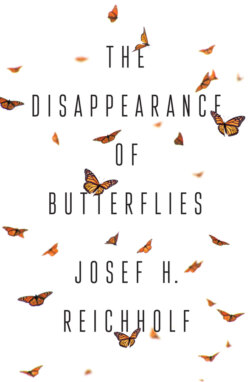Читать книгу The Disappearance of Butterflies - Josef H. Reichholf - Страница 10
Insects fly towards UV light
ОглавлениеDuring my studies, I became familiar with a method that is more suitable than any other to establishing the abundance of moths. It consists of attracting species that are active at night using UV light. This is no longer done with large mercury-vapour lamps of 1,000 watts, which are used to light up white sheets that have been stretched behind them, as was common practice in the past and as I have attempted myself, but instead by means of an ingenious construction using UV neon tubes of only 15 watts. The moths and other insects are drawn in by this UV light. When they approach, they enter a funnel under the light tubes, leading to a large sack, in which the insects land. In order to offer them a place to hide until the following morning, empty egg cartons or similar are placed in the sack. This collection method does not harm the moths in any way. In the sack they quickly settle down, since the stimulus of the light has been removed. Together with the other insects, the moths are counted the following morning, and identified species by species, to the extent that their species identification is possible. At that point, all the insects are released immediately. In this manner, readily analysable and statistically useable results are achieved, which can be compared, depending on the problem in question, with a similar assembly of the apparatus in another location. This method can even be used to establish frequency and species composition of moths in quite different habitats. This is exactly what I did, starting from 1969. Dr Hermann Petersen perfected the method. I am greatly indebted both to him, and also to Elsbeth Werner for allowing me to use her pesticide-free farm for research.
Unfortunately, this type of light attraction does not work with butterflies. In order to establish changes in frequency for them in a comparable manner, I started to count them in the 1970s, along specific, fixed routes that would not be changed over the years. For example, along forest tracks or dirt tracks across fields, or along embankments already specified as transects. With their signs indicating river kilometres, placed at intervals of exactly 200 metres, these riverside routes are perfectly suited to such transect counts. In the 1980s, I primarily used the findings that I had obtained in this way for my lectures on ecology and nature conservation at the Technical University of Munich and on ecological biogeography at the University of Munich. Over the years, it became clear that the light traps and the route counts (or ‘transects’) yielded fewer and fewer butterflies. As for the ‘by-catch’, as I referred to the other insects that flew into my lights, even the cockchafers disappeared, despite previously having been so numerous. On more than one occasion, their mass flight to the UV light caused the sack to become detached from the funnel and fall to the ground, since up to 1,000 cockchafers had crept in there in the gloaming. Since there were often hardly any moths in the cockchafer season at the beginning of May, such a mishap did not compromise the annual totals. But the rather sudden decrease in the cockchafers perplexed me. This was the first signal that my investigations were providing important data about the changes to nature. Yet in the 1980s, I still had no inkling of how sharply downhill things would go for the moths and the other insects, nor that my findings would result in an eco-nutritional basis for the decline of the birds in the meadows and the fields.
